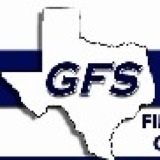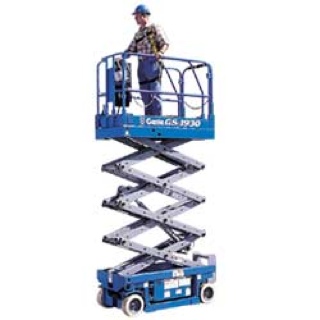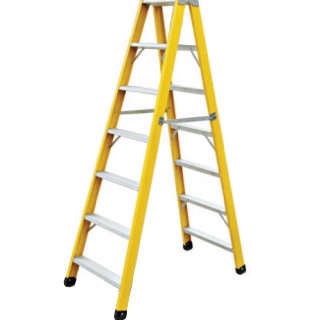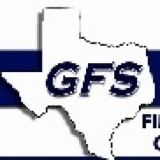Information
-
Document No.
-
Company's Name
-
Company's Address (Street/Suite#/City/State/Zip)
-
Conducted on
-
Prepared by
-
Personnel
Information
Information
-
GFS Texas Order Number:
-
Date and Time
-
Report To:
-
Site Inspection's Address (Street/Suite/City/State/Zip)
-
Is the building occupied?
-
Has the Building Owner been notified?
-
Has the Fire Marshall been Notified? (If "No" does the FM need to notified to perform inspection)
-
Has the building's Security/Maintenance been notified of fire suppression system testing?
General Section (A) - To only be answered by the Owner or Owner's Representative
-
Is the Owner or Owner's Representative Present during inspection?
-
Name, Title and Signature
-
Have there been any changes in the occupancy classification or operation since last inspection?
-
Have there been any changes or repairs to the fire protection system since last inspection?
-
Has a fire occurred since last inspection?
-
Have damaged sprinkler components been replaced?
-
Are gravity, surface or pressure tanks protected from freezing?
-
Are the buildings areas protected by a wet system, heated, including the blind attic and perimeter areas, where accessible?
-
Have there been any irregularities in pump operation during weekly/monthly test? (If applicable)
-
Are any of the sprinkler heads 50 years old or older?
General Section (B)- to only be answered by Inspector
-
Does there appear to be proper clearance between the top of all storage and the sprinklers' deflectors?
-
Have the sprinkler systems been extended to all visible areas of the building?
-
Are all visible exterior opening protected against the entrance of cold air?
-
Have all fire pumps been tested to their full capacity through the use of hose streams or flow meter within the past 12 months?
-
What type of inspection has the Owner been performing on the fire suppression systems?
- Weekly
- Monthly
- Quaterly
- Semi-Annual
- Annual
- Third Year
- Fifth Year
- Special
- None
-
Are these inspection performed at normal intervals?
General Inspection
General Inspection Questions
City Connection
-
City Connection
Connection
-
What type of water supply
-
Other Type
Test Pipe
-
What is the test pipe connection?
-
What is the size of the test pipe? (inches)
-
Static pressure before (psi)
-
Flow Pressure (psi)
-
Static pressure after (psi)
Backflow
-
Title of Backflow
-
What type are the valves?
-
Are valves "Easily Accessible"?
-
Are signs visible and legible?
-
Are the valves open?
-
Are the valves secured?
-
Is the tamper operational?
-
Photo of Backflow
Select Type of Inspection
-
Any "No" answer, test failures or other problems found with the sprinkler system must be explained in each comment section provide with the question
-
Weekly Inspection
Weekly
-
Are the control valves supervised with seals in correct (open or closed) position
-
Are Backflow preventers valves in correct (open or closed) position?
-
Are Backflow preventers sealed, locked or supervised and accessible
-
If sprinklers have been replaced, were proper replacement used?
-
Monthly Inspection (in addition to previous inspection section)
Monthly
-
Are control valves with locks or electrical supervision in correct (open or closed) position?
-
Sprinkler wrench with spare sprinklers?
-
Gauges in good condition?
-
Are alarm valves: gauges show normal supply water pressure, free from physical damage, valves in correct (open or closed) position and no leakage from retarding chamber or drains?
-
Quarterly Inspection (in addition to previous inspection section)
Quarterly
-
Pressure reducing valves: in open position, not leaking, maintaining downstream pressure per design criteria and in good condition with handwheels not broken?
-
Are the hydraulic nameplates securely attached to risers and legible?
-
Fire Department connections: Visible, accessible, couplings and swivels not damaged and rotate smoothly, plugs or caps in place and undamaged, gaskets in place and in good condition, identification sign(s) in place, check valve is not leaking, clapper is in place and operating properly and automatic drain valve in place and operating properly?
-
If plugs or caps are not in place on the Fire Department Connection, inspect interior for obstructions.
-
Alarm devices free from physical damage?
Testing
-
Mechanical waterflow alarm devices passed test by opening the inspector's test connection or bypass connection with alarms actuating and flow observed?
-
Did post indicting valves open until spring or torsion is felt in the rod? (then closed back one quarter turn)
-
Semi-Annual Inspection (in addition to previous inspection section)
Semi-Annual
-
Valve supervisory switches indicate movement?
-
Electrical waterflow alarm devices passed tests by opening the inspector's test connection or bypass connection with alarms actuating and flow observed?
-
Annual Inspection (in addition to previous inspection section)
Annual
-
Proper number and type of spare sprinklers?
Visible sprinklers:
-
Free of corrosion and physical damage?
-
Free of obstructions to spray patterns?
-
Free of foreign materials including paint?
-
Liquid in all glass bulb sprinklers?
Visible pipe:
-
In good condition/no external corrosion?
-
No mechanical damage and no leaks?
-
Properly aligned and no external loads?
-
Are visible pipe hangers and seismic braces damaged or loose?
-
Does VISIBLE wet pipe have adequate heat?
-
Has an internal inspection of the pipe been performed by removing the flushing connection and one sprinkler near the end of the branchline within the last five (5) years? (If not, conduct an internal inspection) Take Pictures
Testing
-
Are all sprinkler dated 1920 or later?
-
Fast response sprinkler 20 or more years old replaced or successfully sample tested within last 10 years?
-
Standard response sprinkler 50 or more years old replaced or successfully sample tested within last 10 years?
-
Standard response sprinkler 70 or more years old replaced or successfully sample tested within last 5 years?
-
Dry-type sprinklers replaced or successfully sample tested within last 10 years?
-
All control valves operated through full range and returned to normal position?
-
Backflow devices pass backflow test?
-
Backflow devices pass full flow test?
-
Pressure reducing valves passed partial flow test?
-
Fifth year inspection (in addition to previous inspection section)
Fifth year
-
Check valves internally inspected and all parts operate properly move freely and are in good condition?
Testing
-
Sprinkler rated above High temperature tested?
-
Gauges checked by calibrated gauge or replaced?
-
Pressure reducing valves passed full flow test?
-
Additional Photos
-
Additional Comments
Pre-Action/Deluge
Pre-Action Systems
-
Note: Before any Dry pipe, Deluge, or Pre-action valve is trip tested. the water supply lines should be throughly flushed. The two-inch drain below the valve should be opened wide and water at full pressure should be discharged long enough to clear pipe of any accumulation of scale or foreign material. the drip valve on the dry pipe valve should be checked before tripping the dry pipe valve to see that it is in operating condition.
-
Total Number of Pre-Action Systems?
-
Pre-Action System
Pre-Action
-
Title of Pre-Action System
-
What area is the Pre-action system protecting?
-
Approximate number of sprinkler heads on system?
-
Pre-Action Valve Photos
-
Pre-Action Valve Information (Make/Model/Year)
-
Pre-Action Valve Size (inches)
-
Is the Pre-action valve "Easily Accessible"?
-
Are signs visible and legible?
-
Is the valve open? (if no, is it supposed to be closed?)
-
Is the valve secured?
-
Is the tamper operational?
-
What color tag was placed on the riser after inspection? (If a Yellow or Red tag is select) What is the deficiency?
Alarms
-
Did the water motor gong operate during testing?
-
Did the electrical alarms operate during testing?
-
Did the supervisory alarms operate during testing?
-
Was the water flow alarm indicator and retard test satisfactory?
-
What was the time? (seconds)
General Pre-Action Inspection
-
Any "No" answer, test failures or other problems found with the sprinkler system must be explained in each comment section provide with the question
-
Gauges in good condition and showing normal air and water pressure?
-
Valve enclosure maintaining at least 40F?
-
For freezer systems, is the gauge near the compressor reading the same as the gauge near the pre-action valve?
-
Valves free from physical damage, trim valve in appropriate (open or closed) position, no leak from valve seat, and all electrical components in sevice?
-
Is the priming level correct and has the low air pressure signal passed it's test?
-
Pre-Action valve that need to be opened to be reset passed internal inspections?
-
Low temperature alarms passed test?
-
Pipe through freezers free of ice blockage?
-
Has an internal inspection or the pipe been performed by removing the flushing connection and one sprinkler near the end of a branchline within the last five (5) years?(If the answer is "No," conduct an internal inspection)
-
Automatic air maintenance devices on preaction systems passed test?
-
Strainers, filters, restricted orifices and diaphragm chambers passed internal inspection?
-
Pre-action valve that can externally reset passed internal inspection?
-
Have low point drains been emptied?
-
If any of the following were discovered, was an obstruction investigation conducted?
-
If the conditions were found that required flushing, was flushing of system conducted?
-
1. Defective intake screen on pump with suction from open source
2. Obstructive material discharged during waterflow tests
3. Foreign materials found in dry-pipe valves, check valves or pumps
4. Foreign material in water during drain test or plugging of inspector's test connection
5. Plugging of pipe of sprinklers found during activation or alteration
6. Failure to flush yard piping or surrounding public mains following new installation
7. Record of broken mains in the vicinity
8. Abnormally frequent false-tripping of dry-pipe valve
9. System is returned to service after extended period out of service (greater than 1 year)
10. There is reason to believe the system contains sodium silicate or its derivatives or highly corrosive fluxes in copper pipe systems
Testing
Main Drain Test:
-
Record Static Pressure (psi)
-
Recored Residual Pressure (psi)
-
Was flow observed?
-
Are the results comparable to previous?
Full Flow Trip Test: (not required where water can't be discharged. Test all systems together that will operate simultaneously.)
-
Discharge from all nozzles unimpeded?
-
Pressure reading at hydraulically most remote nozzle? (psi)
-
Residual pressure reading at valve? (psi)
-
Above readings comparable to design valves?
-
Manual activation devices passed test?
-
Additional Notes
-
Additional Photos
Deluge Systems
-
Total Number of Deluge Systems?
-
Deluge System
Deluge
-
Title of Deluge System
-
What area is the Deluge system protecting?
-
Approximate number of sprinkler heads on system?
-
Deluge Valve Photos
-
Deluge Valve Information (Make/Model/Year)
-
Deluge Valve Size (inches)
-
Is the Deluge valve "Easily Accessible"?
-
Are signs visible and legible?
-
Is the valve open? (if no, is it supposed to be closed?)
-
Is the valve secured?
-
Is the tamper operational?
-
What color tag was placed on the riser after inspection? (If a Yellow or Red tag is select) What is the deficiency?
Alarms
-
Did the water motor gong operate during testing?
-
Did the electrical alarms operate during testing?
-
Did the supervisory alarms operate during testing?
-
Was the water flow alarm indicator and retard test satisfactory?
-
What was the time (seconds)
General Deluge Inspection
-
Any "No" answer, test failures or other problems found with the sprinkler system must be explained in each comment section provide with the question
-
Gauges in good condition and showing normal air and water pressure?
-
Valve enclosure maintaining at least 40F?
-
For freezer systems, is the gauge near the compressor reading the same as the gauge near the pre-action valve?
-
Valves free from physical damage, trim valve in appropriate (open or closed) position, no leak from valve seat, and all electrical components in sevice?
-
Is the priming level correct and has the low air pressure signal passed it's test?
-
Deluge valve that need to be opened to be reset passed internal inspections?
-
Low temperature alarms passed test?
-
Pipe through freezers free of ice blockage?
-
Has an internal inspection or the pipe been performed by removing the flushing connection and one sprinkler near the end of a branchline within the last five (5) years?(If the answer is "No," conduct an internal inspection)
-
Automatic air maintenance devices on dry-pipe and preaction systems passed test?
-
Strainers, filters, restricted orifices and diaphragm chambers passed internal inspection?
-
Deluge valve that can externally reset passed internal inspection?
-
Have low point drains been emptied?
-
If any of the following were discovered, was an obstruction investigation conducted?
-
If the conditions were found that required flushing, was flushing of system conducted?
-
1. Defective intake screen on pump with suction from open source
2. Obstructive material discharged during waterflow tests
3. Foreign materials found in dry-pipe valves, check valves or pumps
4. Foreign material in water during drain test or plugging of inspector's test connection
5. Plugging of pipe of sprinklers found during activation or alteration
6. Failure to flush yard piping or surrounding public mains following new installation
7. Record of broken mains in the vicinity
8. Abnormally frequent false-tripping of dry-pipe valve
9. System is returned to service after extended period out of service (greater than 1 year)
10. There is reason to believe the system contains sodium silicate or its derivatives or highly corrosive fluxes in copper pipe systems
Testing
Main Drain Test:
-
Record Static Pressure (psi)
-
Recored Residual Pressure (psi)
-
Was flow observed?
-
Are the results comparable to previous?
Full Flow Trip Test: (not required where water can't be discharged. Test all systems together that will operate simultaneously.)
-
Discharge from all nozzles unimpeded?
-
Pressure reading at hydraulically most remote nozzle? (psi)
-
Residual pressure reading at valve? (psi)
-
Above readings comparable to design valves?
-
Manual activation devices passed test?
-
Additional Notes
-
Additional Photos
Conclusion
Conclusion
-
Although these comments are not the result of and engineering review, the following improvements are recommended for code compliance
-
Deficiencies and Recommendations
-
Additional Photos
-
Additional Notes
-
Inspector Signature
-
Do any the fire suppression inspected today need a "Fifth Year Obstruction Investigation"
-
Did the owner decline the investigation?
-
I the under signed have declined to have a fifth year obstruction investigation. I am completely aware and understand the risks associated with not having a fifth year obstruction investigation done. I do not hold GFS Texas responsible for anything that causes damage to personnel or property by an obstruction in the fire suppression system. (Type name and Title)
-
Disclaimer:
The fire inspector believes the information contained within this "Fire Inspection" report to be correct at the time of printing. The fire inspector/GFS Texas does not accept responsibility for any consequences arising from the use of the information herein. The report is based on matters which were observed or came to the attention of the inspector during the day of the assessment and should not be relied upon as an exhaustive record of all possible risks or hazards that may exist or potential improvements that can be made.
Fire suppression systems that are not properly maintained and serviced can present a risk to life safety and property. This inspection is to assist in maintaining the fire suppression system and should not be relied upon as the sole basis for maintaining the system inspected.
As Per NFPA 25 14.2.1 "An inspection of piping and branch line condition shall be conducted every five (5) years by opening a flushing connection at the end of one main and by removing a sprinkler toward the end of one main and by removing a sprinkler toward the end of one branch line for the purpose of inspecting for the presence of foreign organic and inorganic material." This investigation is to insure that the fire suppression systems do not show any evidences of an obstruction that could impair the system.
GFS Texas is not responsible for any damage, to life (or/and) property due to neglect of properly heating area with wet pipe fire suppression system or dry pipe/pre-action fire suppression system that contain water due to tripped valves and system not being completely drain afterwards.
Confindetiality Statement:
In order to maintain the integrity and credibility of the fire inspection processes and to protect the parties involved, it is understood that the fire inspector will not divulge to unauthorized persons any information obtained during this inpseciton unless legally obligated to do so. -
Owner's or Owner's Representative Signature (I have read the above disclaimer and understand its content)
Witness
-
Name - Title and Signature









